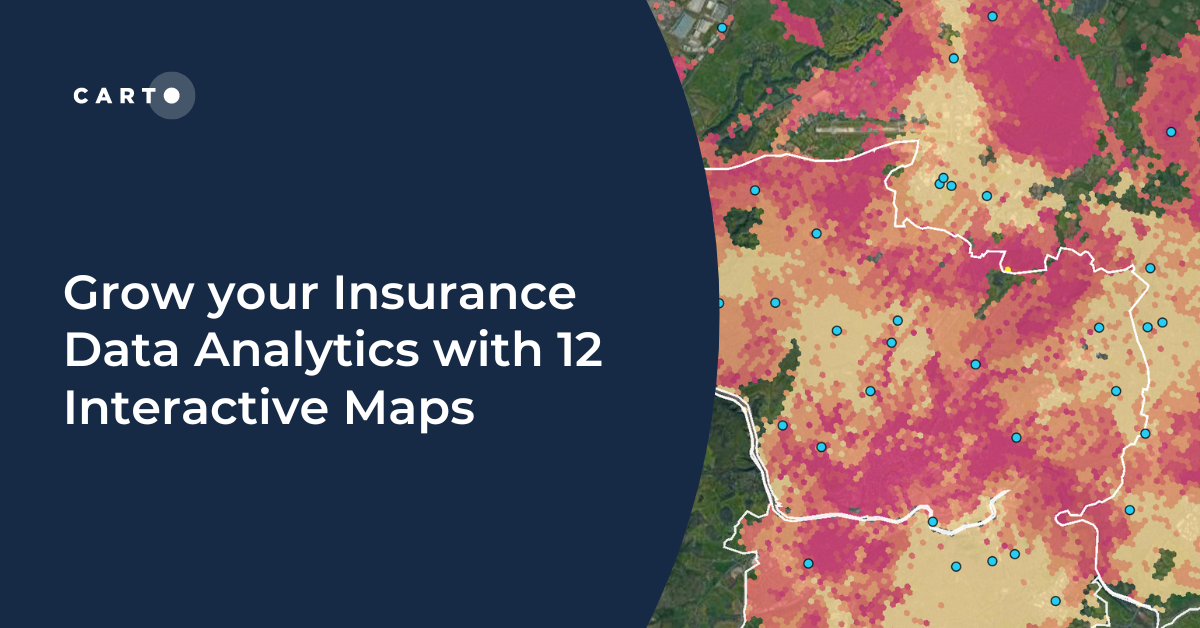From clicks to bricks: the ecommerce companies who reverse engineered Site Selection

The story usually goes that brick-and-mortar retail chains were too slow in adapting to changing omnichannel landscape and have struggled to compete with e-commerce retailers.
But that’s not the entire story.
Some of today's most successful retailers actually began online before expanding operations to brick and mortar locations and now companies looking to jumpstart omnichannel selling are experimenting with online-to-offline commerce.
In reverse engineering traditional site planning practices Bonobos and Warby Parker paved the way for innovative strategies such as Instacart’s “click-and-collect” online grocery shopping service.
But what these “click-to-brick” success stories all have in common is an understanding of the value of Location Intelligence. Let’s take a look at what lessons retailers can learn from these six successful companies to get ahead in 020 commerce.
Bonobos

Launched in 2007 with an inventory of well-designed men's pants Bonobos made headlines when it was acquired in 2017 for a staggering $310 million dollars by Walmart. Unlike other e-commerce companies the online menswear company was one of the first digitally native vertical brands and what fueled its "direct-to-customer" business model was a vertically integrated supply chain. In 2012 Bonobos made the leap to offline retail to expand its customer base to offline shoppers with its first guideshop a showroom-style location where customers can browse try on and purchase orders that are then shipped to the customer's home free of charge.
Location Intelligence Takeaways
- Location data from shipment orders provided insights on regional expansion for guideshops
- Placing orders and shipments through their website provides a rich source of customer data to build profiles
Warby Parker

When this company launched in February 2010 its objective was to provide customers with affordable eyewear that looked great. Warby Parker achieved the first part of this goal by bringing manufacturing and distribution in house and passing the savings on to customers. Like Bonobos the company’s control of distribution boosted customer service and was the driving force behind its Home Try-on option where 5 pairs of glasses were shipped to customers to check out free of charge. But simulating the browsing experience wasn’t enough to raise brand awareness. In 2010 the company opened its flagship showroom in Manhattan and has expanded incrementally to 64 locations today.
Location Intelligence Takeaways
- Parcel distribution strategies including shipments and returns improve customer service and maintain inventory efficiency
- Opening fewer flagship stores in more competitive markets can help raise brand awareness
Rent the runway

Bonobos's direct-to-customer model was premised on an assumption that women preferred in-store shopping for experience whereas men preferred online shopping for the efficiency. But in 2009 Jennifer Hyman and Jennifer Fleiss put this assumption to rest with the launch of Rent the Runway a two-tiered subscription-based business offering high-end fashion at affordable prices. Alongside Uber and Airbnb Rent the Runway was ranked the 9th most disruptive company in 2018.
What’s novel about this click-to-brick strategy is that showrooms first opened in high-end retail stores like Henri Bendel and Neiman Marcus where Rent the Runway members could browse merchandise and scan items to rent to their virtual closets. Today Rent the Runway operates five flagship stores in metropolitan areas featuring a rotating inventory that can be rented on the spot.
Location Intelligence Takeaways
- Subscription-based retail provides location data helping guide inventory selection based on regional trends
- Location data also enables store-within-store partnerships by matching regional demand with local high-end boutiques
- Flagship stores in major trade areas raise brand awareness while disrupting traditional markets
- Parcel distribution becomes a marketing opportunity as reusable eco-friendly garment bags appeal to their target millennial shoppers
Birchbox

Another monthly subscription service Birchbox debuted online in 2010 providing personal beauty product for women and then expanding to grooming products for men in 2012. What's novel about this ecommerce company's offline expansion was that its pop-up store site planning strategy relied on a geomarketing campaign #BirchboxInMyCity to determine where customer demand was greatest in cities across the United States. Gaining over 1 million subscribers in five years the company has generated over $72 million which is leading established brick and mortar retailers like the Gap and Sephora to test subscription services.
Location Intelligence Takeaways
- Crowdsourced data from geomarketing campaigns provide important insights on where stores are needed to meet demand
- Pop-up store locations reduce risks associated with market expansion through short-term leases
MADE.com

In 2010 Ning Li launched MADE.com with the goal of becoming the digital IKEA driving traffic to its website with rich content interactive forums and annual competitions spotlighting up-and-coming designers. With a focused geomarketing strategy MADE leverages crowdsourced data to determine what designs to put into production and groups orders for mass production to reduce manufacturing costs. In 2012 the homeware retailer opened a showroom featuring miniature designs of the website’s most popular items in its London showroom allowing visitors to scan QR codes for product specs interact with miniature design models and provide customers with fabric samples. Bridging the gap between online shopping and offline selling MADE recently introduced conversational commerce allowing online shoppers to instantly chat with in-store employees from the company’s three showcase rooms.
Location Intelligence Takeaways
- Creating robust websites to drive traffic and crowdsourced data for manufacturing orders
- Bridge digital gap providing online customer service from offline showrooms
Location Intelligence Drives Retail Innovation
None of these 5 retailers existed 15 years ago - yet they are shaking up customer expectations of the Retail experience by harnessing the power of data to drive their decisions on location. More traditional Retailers may not always have the luxury of such large amounts of internal data - but fortunately new data streams from providers such as Vodafone or Unacast provide a unique opportunity to catch up with these disruptors.
Want to find out more? Visit our data streams page.









.png)





